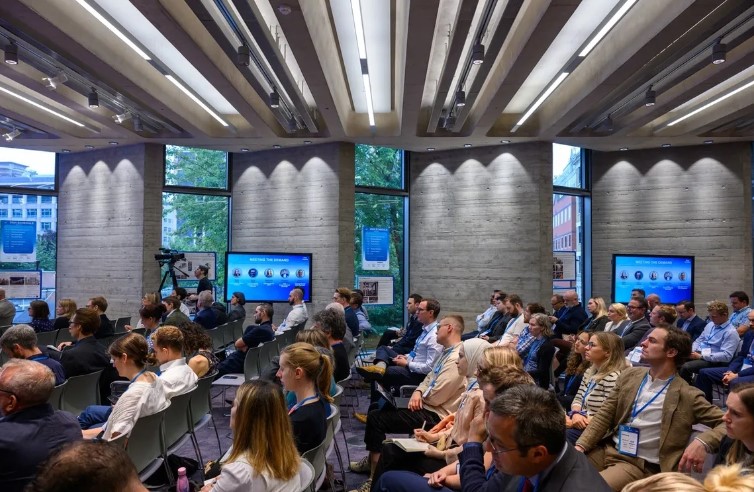
Harry went along to the Circular Steel event in September and gave us a recap of the day. There is a lot to unpack and the conversation will continue beyond this post, but here’s a start.
As one of our recent posts shows, we currently have a project on site with Mike Tuck which uses reclaimed steel from Cleveland Steel & Tubes. A number of our projects have explored the option of reusing steel and so we’re experienced with the process involved. However, it was great to hear what others are doing across the industry and to knowledge share with our fellow professionals.
One of the most interesting aspects of the event was the variety of attendees. We expected to see architects and fellow engineers there, but representatives from demolition contractors and project managers were also there in force. It was fascinating to hear about steel reuse from a wider industry perspective. The varied, and large, attendance also hit home how important the material reuse topic is and how seriously the industry is taking it.
Something we learnt from this event is that we’ve underestimated how complicated it can be from a fabrication point of view to reuse steel. As an example, if a steel section has existing holes in it or connection plates were previously attached, then automated cutting machinery cannot be used on those sections. The process of then reusing the steel becomes more labour intensive.
It was also made clear that we should currently be considering reusable steel as a finite resource, and thinking about its use on a macro scale instead of project specific. What we mean by that is you can specify to reuse steel on a project but if that reused section is not working hard enough in that location, then it’s better to leave it available for another project and find an alternative solution instead.
There were a couple of common themes cropping up throughout various presentations and discussions regarding demolition professionals. We must commission pre-demolition audits far earlier in the process than is currently being done. It’s important to define an inventory of materials and fabrics that could be reused as soon as possible. And, engage a demolition contractor earlier in the process too. They’ll help with maximising what they can extract from a site and contribute to feasibility studies to help determine the extent of reuse.
We would love to continue the conversation with our industry colleagues – please get in touch.
